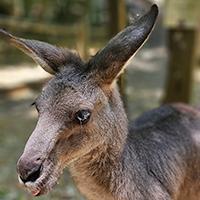Leaderboard
Popular Content
Showing content with the highest reputation since 11/19/2025 in all areas
-
Merry Christmas and happy New Year to everyone! We wish peace, joy, and good health to all of you and your loved once! Alex55 The Link to the Project files provided8 points
-
Hello to all forum members. I bring to your attention a festive Christmas video. Description and download link for the YouTube video. Congratulations on the wonderful upcoming holidays. I wish you creative success and good health.6 points
-
Hello everyone Best wishes for a safe and happy Christmas and a wonderful New Year. I have started creating an AV of my travels this year. I was aiming for one photo per week but did not quite achieve my goal. Most weeks I take hundreds if not thousands of photos depending on location and subject. I spent 6 weeks in Europe in April - June, so there are a few more from this trip to the other side of the world. The images are captured on a mirrorless camera, drone, mobile camera/phone and 360 camera. This may not be the final AV but it will be very close. Cheers Mark6 points
-
4 points
-
The 360-degree imagery requires a special application to make the videos which can then be further edited in PTE AV Studio. The original 360degree video cannot be edited directly in PTE. Glad you enjoyed them Mark2 points
-
2 points
-
I would like to thank Jill and others who quickly answer PTE queries and provide valuable insights to forum members. I know that I personally have gathered a greater knowledge of the program through her. Kieron2 points
-
Great year end summary. Interesting effects and even me, an old school "no special effect, just merge on into the other" liked them😊😊. I would have liked a screen text indicating where you are with each group of images. Two comments re the music: - Please fade it out at the end - Ordinarily I would have made the same comment as Alex55, I doubt if I would ever chose it. But here it didn't bother me. I suspect I was concentrating more on the images, as it should be. Thanks for the show1 point
-
Hi Alex, like every year you've treated us to a really great activity. And a big thank you for sharing it every time. Wishing you very happy holidays!1 point
-
Even what I have been told is copyright free has been banned by YouTube and Vimeo is the same. The only exception is FB which you need to share on their platform. I have changed the start in V3 and done a little editing of the images. I am also working on a "Bird Year Story". Thanks again Mark1 point
-
360 degree images are what they call equirectangular (2:1 aspect ratio). In this instance they were captured with a dual fisheye camera for ease. The area I live in is just 2 hours from Brisbane and right on the coast of the Pacific Ocean so I have nature around me and the city not far away. Thank you.1 point
-
1 point
-
I've used a copyright music a lot. Never had any problem. Until you are going to monetize the thing, I guess. Alex1 point
-
Thank you! It's so diverse and yet so beautiful. I wish you a new year full of travel and wonderful experiences! I also really enjoy panoramic photography.1 point
-
Thanks for the beautiful views. The timelaps are impressive. Do panoramic photos also look original, as far as I understand they have fisheye applied to them? The mix is also peculiar, a landscape with a wild coast turning into the facade of a skyscraper... Good luck in your creative work! I'm waiting for new jobs.1 point
-
Mark, thank you for sharing beautiful photos and videos! Amazing views, animals, birds, beautiful palaces and squares of Europe. Music can add accents. Sometimes lyrical, sometimes dynamic. Good luck! Merry Christmas and a Happy New Year! Joy and happiness to you and your family!1 point
-
digartal, Thanks for the comment. I just like to draw. But sometimes I pick up a camera and a video camera, depending on the situation or mood. This is especially facilitated by the visit of the grandchildren.🙂1 point
-
Mark, Nice stories. Sounds like you need some good music now. Don't forget to show us the final thing. Alex1 point
-
Thanks for sharing this - very well done animations. I am more of a photographer that makes AV's than a digital creator that makes presentation but I can appreiate the work in creating this. Thank you again for sharing. Mark1 point
-
Igor, Thank You. I'm wishing you peace this Christmas and a New Year full of peace promises. Best1 point
-
1 point
-
Are you sure that you have added the image as a separate Object & it is not a Child of an existing Object. Before you add the new image make sure you Click off any other Objects. Click in a blank Space in the Object Panel bottom right of the O&A window. Your new image should then appear at the top of the stack & you should be able to see it. Even after using PTE for more than 20 years it is a mistake I still occasionally make when working in a rush Jill1 point
-
Fabulous, great show, very well done. Best wishes to you and your family for safe, happy and festive Christmas. Mark1 point
-
Hello Alex, thank you for this New Year's card for 2025/early 2026. Happy holidays to you and your loved ones. René1 point
-
Thank you Alex for this beautiful Christmas show. Thank you for all that you contribute to this forum and for your generosity throughout the year. Merry Christmas and a Happy New Year to you and yours. Rosemary1 point
-
Hello Alex, another beautiful and dynamic slideshow, as usual. I wish you a Merry Christmas and a very Happy New Year!1 point
-
very easy to do. Simply link those audio files to the slides you don't want. Then in Slide View delete the Slides, the audio files will be deleted along with the Slides. I would first move the audio clip on Track 2 to the right to roughly where you want it under Slide 6 Or you could delete those audio files from Track 1 first & then delete the 5 Slides. Again reposition Track 2 first Jill1 point
-
Hi Mike, By default, user slide styles, custom transitions and templates are located in these 2 folders on your Mac: /Users/UserName/Library/Application Support/PTEAVStudio/Templates /Users/UserName/Library/Application Support/PTEAVStudio/Styles and Transitions You can check PTE AV Studio > Main menu > Settings > Preferences. Templates tab for exact path to these folders. I remember from your previous post on the forum: Your program may have deleted the PTEAVStudio folder in Application Support. This likely deleted all the templates and styles as well. Sorry! We offer a special uninstaller utility for PTE AV Studio on a Mac which allows to remove only configuration and keep slide styles and templates: https://files.wnsoft.com/pteavstudio/RemovePTEAVStudio.app-11-0.zip You can change a location of StylesAndTransition folder and Templates folder in PTE AV Studio and make backup of these folders.1 point
-
Updated version of PTE AV Studio 11.0.19 is available for PC and Mac Download: https://www.wnsoft.com/pte-av-studio/download/ Improved YouTube compatibility for 30p videos. Previously, YouTube might have detected them as 29p with dropped frames. 60p is still recommended for smoother playback. Fixed an issue in Timeline mode where applying a slide style could unexpectedly alter the duration of following slides. Improved compatibility for macOS 26. About window shows: 11.0.19 Build 3. It's the same build as previous Beta version.1 point
-
Hi, Please translate your messages into English. You can use Google Translate, for example. Let me know - do you have a PC or Mac? Check an exact version of PTE AV Studio in the About window. If it isn't v11.0.18, I highly recommend to download and install the latest version from WnSoft website: https://www.wnsoft.com/en/pte-av-studio/download/ If it doesn't help, restart your computer and try again.1 point
-
Got there in the end by pure cussedness . Used Clean my Mac ran a full scan and also took out all my PTE folders. Then reinstalled PTE from the Wnsoft site and after requesting the serial number managed to get it to run.1 point
-
Some more Rainbow Bee-eater action. This is a series of around 1,230 images from a 1,310 series of images taken over an 1 hour and 5 minute on Thursday November 20. The same family of Rainbow Bee-eatrs were very busy although they did sometimes fly over the nest and return to the branch without feeding the chicks in the nest. They would return to a branch with and without food for a clutch of chicks in the nest nearby. During the process, a small snake came by the nest (in the ground) and there was a flurry of activity to chase it off (unfortunately not captured due to the timelpase framing. All images are full frame on a Sony A7RV so there are quite a few single frames for use in the future. It took quite a while to process this AV at the best resolution. Ciao Mark1 point
-
1 point
-
The first AV consists of just over 1200 images taken in the morning over a period of approximately 65 minutes. The Australian rainbow bee-eater has a unique method of preparing prey by rubbing venomous insects on a branch to remove stingers. They can consume up to 300 insects daily, which minimizes their need for drinking water. In this AV you will see them fly off and catch insects near the roosting branch. Sometimes seen hitting the insect on the branch to remove the sting. Additionally, communal colonies are now common in the area in summer, where sandy soil is perfect nesting material. Sometimes creating tunnels up to 1.6 meters long, and their mating is monogamous, with pairs potentially returning to the same nesting sites year after year. Often, juvenile birds from a previous brood assist the parents in feeding the next lot of chicks. You will see up to 4 birds that were feeding the same nest. While capturing the sequence for this AV, I witnessed the family bomb diving a small snake that ventured into the area. This is a very short AV with limited display time for each image. The second AV has about 180 images from the time-lapse of the birds in flight. I struggled with the number of images from the series and the duration of the AV to hold the viewers' attention. The duration of this AV is around 4 mins and 37 secs. I was back at the nesting site this morning to get some more images, as they are very restful to watch them come and go. Mark1 point
-
A wonderful project and song selection, everything is true to the songs, we were young and believed, but the years..., I hope your loved ones liked it.1 point
-
There is a new feature in Photoshop called "Harmonize" which will do a little more than just colour correction. Not sure if it will work on layers so you might have to merge your two layers, apply harmonize, then extract your object again or something similar, but I think that I would give it a try. (It does work with layers). There are a few YT videos explaining the procedure - try this one to start.1 point
-
You can use Colour Correction Filters to adjust each image individually - Levels/Saturation/Hue etc Also if you set the background slide to have Nested Colour Filters, then if the PNG's are Children you can adjust all 3 images at once. Jill1 point
-
Hi, We'll introduce our new product this fall. And then PTE 12 will be shown. We already added new fuctions and effects for V12.1 point









